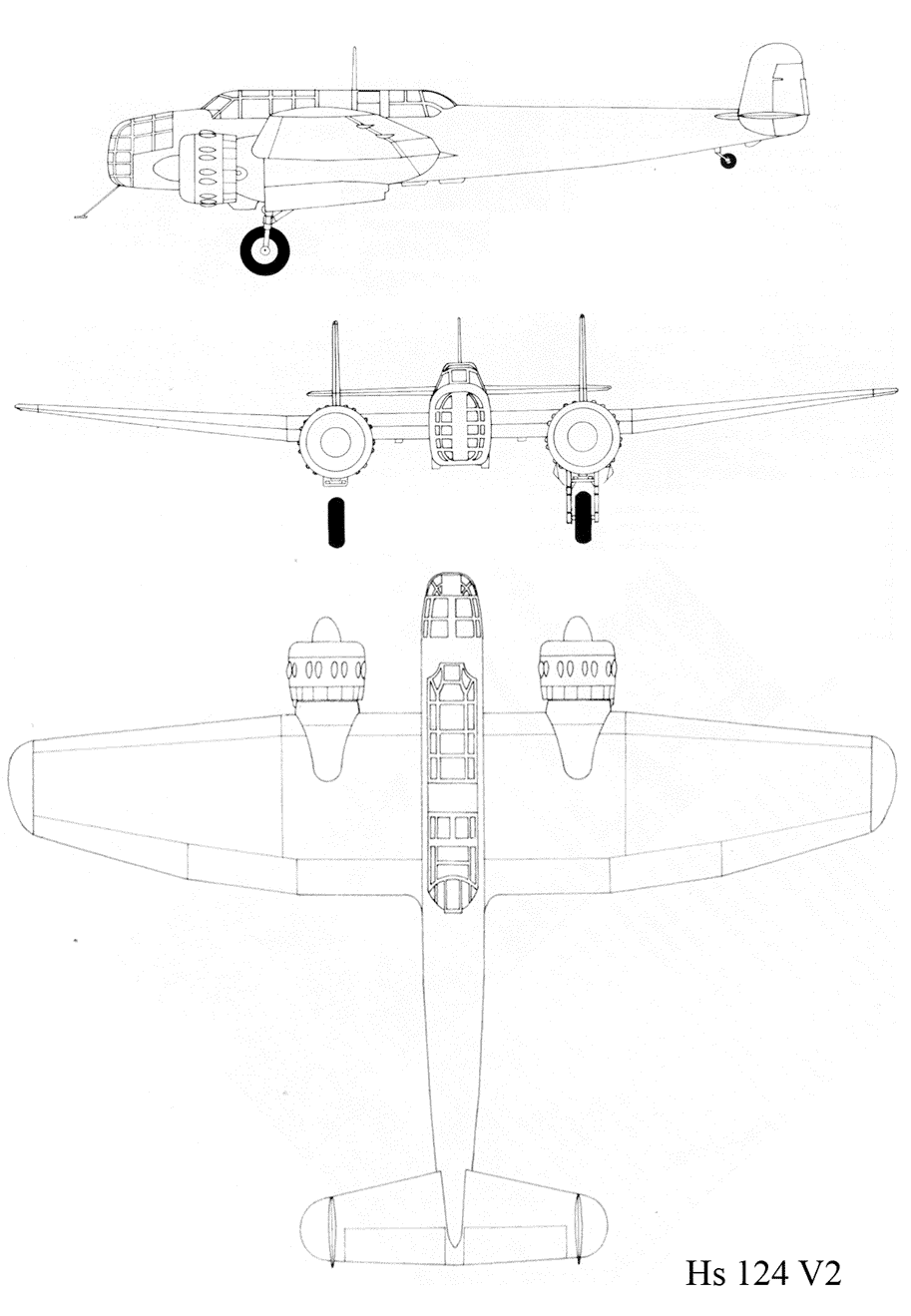
Aviation of World War II


 |
Aviation of World War II |


|
|
Soviet Union | Lend - Lease | Facts | Forum | Germany | Japan | R A F | U S A A F | Other | Photos | ||||||||||||||||||||||||||||||||||||||||||||||||||||||||||||||||||||||||||||||||||||||||||||||
|
| ||||||||||||||||||||||||||||||||||||||||||||||||||||||||||||||||||||||||||||||||||||||||||||||
Hs 124 ✙
| ||||||||||||||||||||||||||||||||||||||||||||||||||||||||||||||||||||||||||||||||||||||||||||||
| Aircraft | Bf 110 | FW 57 | Hs 124 |
|---|---|---|---|
| The first flight | May 1936 | March 1935 | November 1934 |
| Dimensions | |||
| Wing span, m | 16.8 | 25 | 18.2 |
| Length, m | 12.6 | 16.4 | 14.5 |
| Wing area, m² | 39 | 73.5 | 54.5 |
| Weight, kg | |||
| Takeoff weight, kg | 5,700 | 8,300 | 7,200 |
| Wing loading, kg/m² | 146 | 113 | 133 |
| Powerplant | |||
| Engines | Jumo 210 | DB 600 | Jumo 210 |
| Power, h.p. | 675 | 910 | 675 |
| Power load, kg/h.p. | 4.2 | 4.6 | 5.3 |
It can be seen that, in an effort to fulfill the requirements of the task, the designers of the Focke-Wulf and Henschel went to create rather large and labor-intensive aircraft, inferior to the lighter Bf 110, which was designed with only one goal - to achieve the maximum possible speed. This was, of course, not what the Air Ministry wanted, but better than one might expect.
Even more optimism was added by the tests of the third prototype Bf 110V3 powered by the Daimler-Benz engine. Already at the beginning of tests with a take-off weight of 5000 kg at an altitude of 3300 m, a speed of 503 km / h was reached. The tests, however, were constantly interrupted due to the unreliable operation of the DB 600 motors.
Goering demanded to start production of the Zerstorer without delay, and Messerschmitt's Bf 110 was the only one that, to some extent, was suitable for the role of a long-range heavy fighter, which was playing an increasing role in the plans of the Luftwaffe headquarters, already ready to form "heavy" fighter groups ...
| Hs 124 V-2 | |
| Crew | 3 |
| Dimensions | |
|---|---|
| Length, m | 14.50 |
| Height, m | 3.75 |
| Wing span, m | 18.20 |
| Wing area, m² | 54.60 |
| Weight, kg | |
| Emtty weight | 4,245 |
| Loaded weight | 7,220 |
| Powerplant | |
| Engines | 2 × PE ВМW-132Dc |
| Takeoff power, h.p. | 2 × 880 |
| Performance | |
| Maximum speed, km/h | 432 |
| Service range, km | 1175 |
| Service ceiling, m | 6000 |
| Maximum rate of climb, m/min | 345 |
Armament: two 20-mm Mauser cannons on a movable installation in the nose and one 7.9-mm MG-15 machine gun back; 6×100 kg or 12×50 kg bombs
| Photo | Description |
 |
Drawing Hs.124 V-2 |
 |
Henschel Hs.124 V-2 с двумя двигателями воздушного охлаждения ВМW-132Dc |
|
|